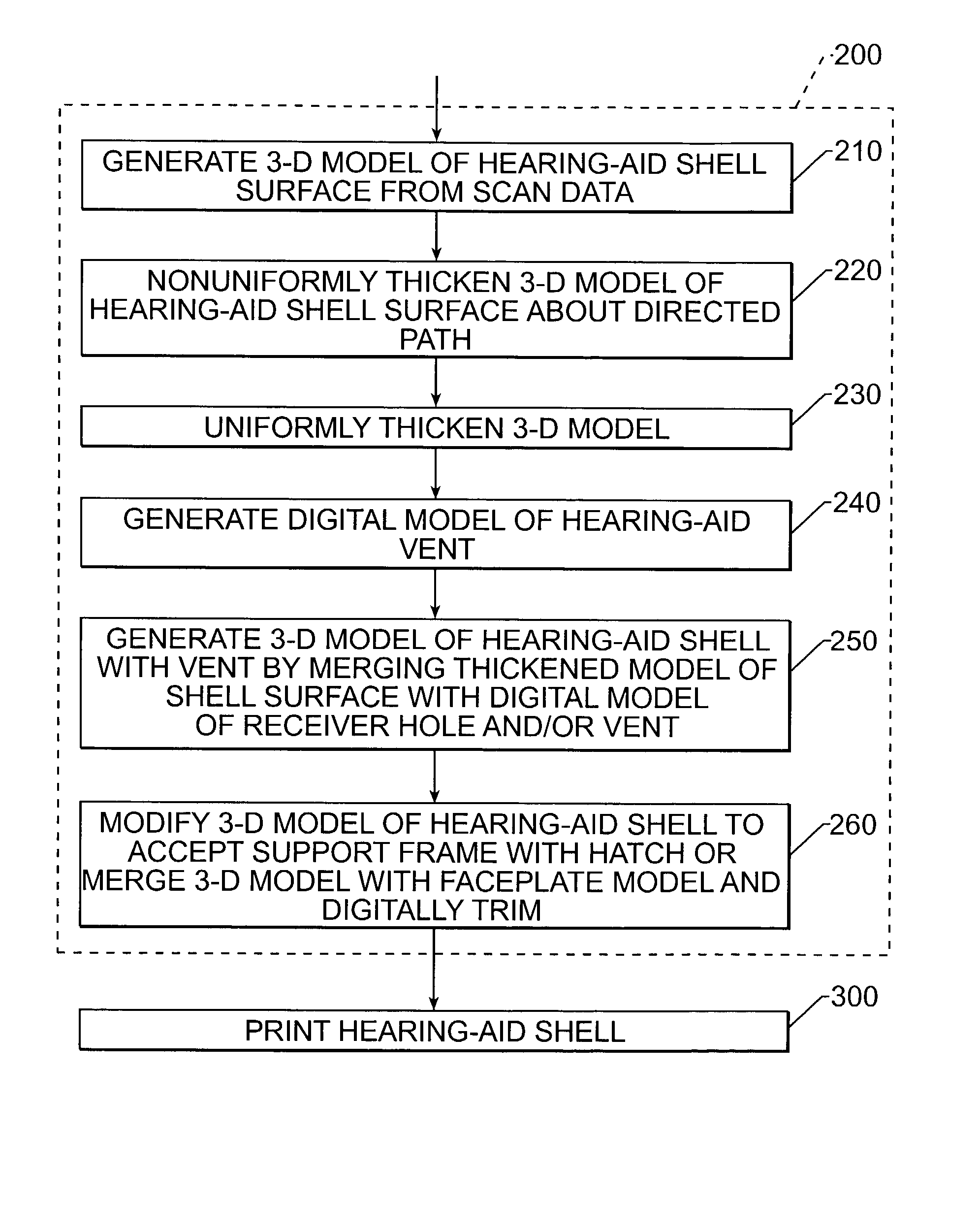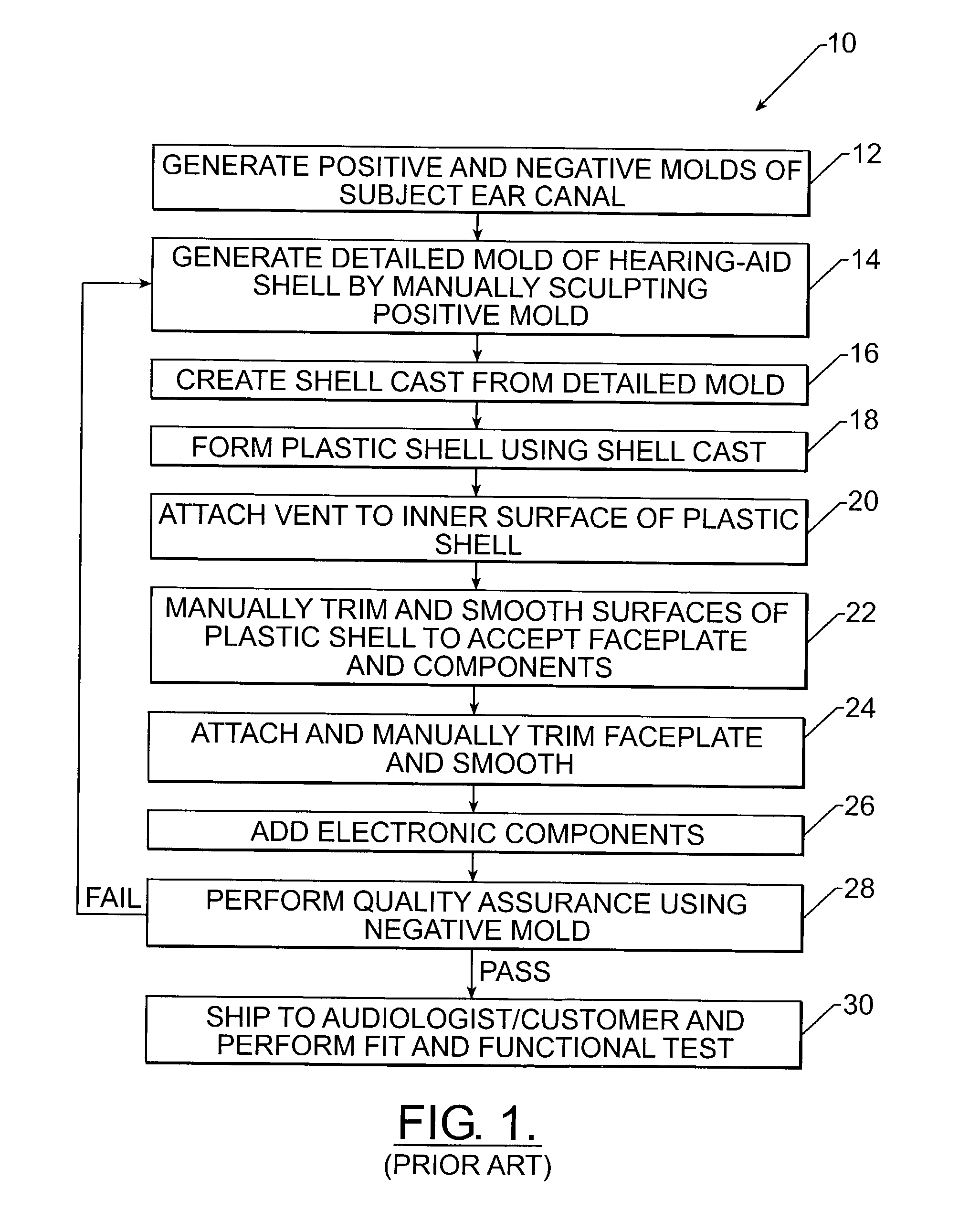Manufacturing methods and systems for rapid production of hearing-aid shells
a manufacturing method and hearing aid technology, applied in image data processing, analogue and hybrid computing, programme control, etc., can solve the problems of manual operation, large number of manual operations, and process restart, so as to reduce the number of manual and time-consuming production steps and operations, the effect of high degree of quality assurance and reliability
- Summary
- Abstract
- Description
- Claims
- Application Information
AI Technical Summary
Benefits of technology
Problems solved by technology
Method used
Image
Examples
Embodiment Construction
[0044]The present invention now will be described more fully hereinafter with reference to the accompanying drawings, in which preferred embodiments of the invention are shown. This invention may, however, be embodied in many different forms and applied to other articles and should not be construed as limited to the embodiments set forth herein; rather, these embodiments are provided so that this disclosure will be thorough and complete, and will fully convey the scope of the invention to those skilled in the art. The operations of the present invention, as described more fully hereinbelow and in the accompanying figures, may be performed by an entirely hardware embodiment or, more preferably, an embodiment combining both software and hardware aspects and some degree of user input. Furthermore, aspects of the present invention may take the form of a computer program product on a computer-readable storage medium having computer-readable program code embodied in the medium. Any suitab...
PUM
| Property | Measurement | Unit |
|---|---|---|
| shape | aaaaa | aaaaa |
| volume | aaaaa | aaaaa |
| surface triangulation | aaaaa | aaaaa |
Abstract
Description
Claims
Application Information
 Login to View More
Login to View More - R&D
- Intellectual Property
- Life Sciences
- Materials
- Tech Scout
- Unparalleled Data Quality
- Higher Quality Content
- 60% Fewer Hallucinations
Browse by: Latest US Patents, China's latest patents, Technical Efficacy Thesaurus, Application Domain, Technology Topic, Popular Technical Reports.
© 2025 PatSnap. All rights reserved.Legal|Privacy policy|Modern Slavery Act Transparency Statement|Sitemap|About US| Contact US: help@patsnap.com



